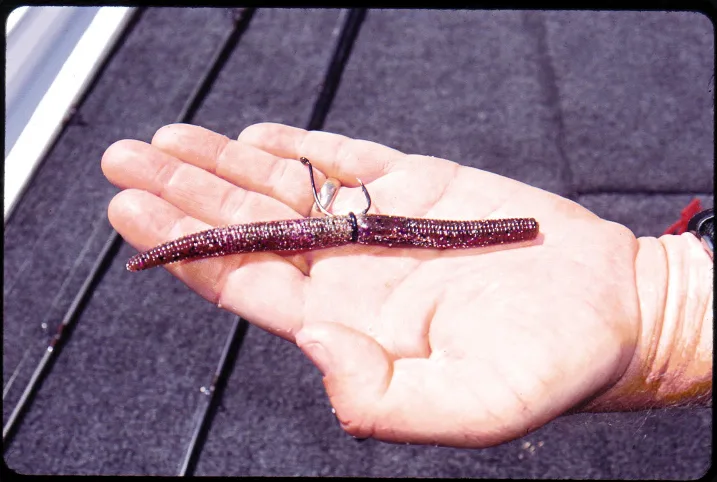_We may earn revenue from the products available on this page and participate in affiliate programs. Learn more ›
_
Don’t let the simple appearance of a Senko worm
mislead you. After many years of steady tournament use, this plastic worm has long been one of the best bass lures
. The Senko and its twin, the YUM Dinger, both offer a truly natural performance combined with terrific versatility.
Lure maker Gary Yamamoto designed the Senko to fall horizontally, in a long, squiggly belly flop, which is more natural than the nose-down attitude most soft-plastic baits for bass
assume. Many lure companies have introduced Senko spin-offs ranging from 3 to 7 inches, but the 5-inch models work best. Depending upon where and how you fish, try these four different approaches on how to rig a Senko, including a wacky rig Senko. Just remember: The main thing is to make the most of the worm’s liveliness.
Rigging a Weightless Senko
The most classic way to fish a Senko—the one you’ll see most people throwing on your local lake—is weightless. Still, there are a few different ways to rig your Senko to maximize the subtle action without any weight, from wacky, to Texas style.
How to Wacky Rig Senko Worms

Wacky rigging allows both ends of a senko to dance and flutter freely in the water.
Texas bass pro Alton Jones often fishes a 5-inch YUM Dinger
wacky-style by fixing a 3/0 Owner Mosquito live-bait hook at the worm’s midsection. This allows both ends of the bait to dance and flutter freely. You don’t need any weight for this, but you can add a very small split shot to the line about 12 inches above the hook to get the worm down. Just make sure you’re twitching it above the depth at which the bass are holding.
“I fish the wacky rig around riprap and boat docks,” Jones says, “dropping it slowly and letting it quiver on the bottom. Then I repeatedly pull the bait ahead and let it fall.” Should bass ignore this, he hot-cranks the worm several feet and kills it, triggering reflex strikes.
This style is excellent around almost any cover, such as grass or rocky banks, performing best in shallow, mostly clear water.
The O-Ring Wacky Rig Senko
One bass is about all you get with the standard wacky rig senko worm because the hook rips through the bait and ruins it. Jones has caught as many as 30 bass on one 5-inch YUM Dinger by placing a 1/4-inch (inside diameter) O-ring around the worm’s midsection like a belt.
Use needle-nose pliers to spread the O-ring, then slip a 3/0 Owner Mosquito live-bait hook underneath so that it’s belted to the worm just at the eye. When a bass strikes, it will bite the hook directly and not tear into the worm too much, and you can reuse the lure.
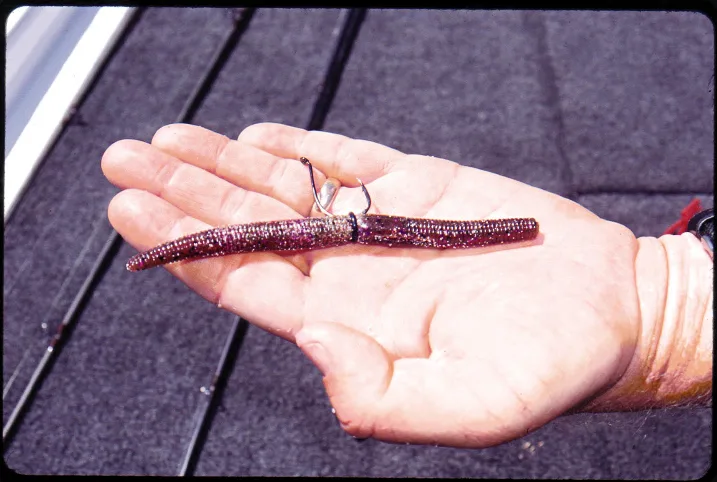
Using an O ring helps keep your senko worm intact and more durable during multiple strikes.
Using an O ring helps keep your senko worm intact and more durable during multiple strikes.
How to Texas Rig Senko Worms
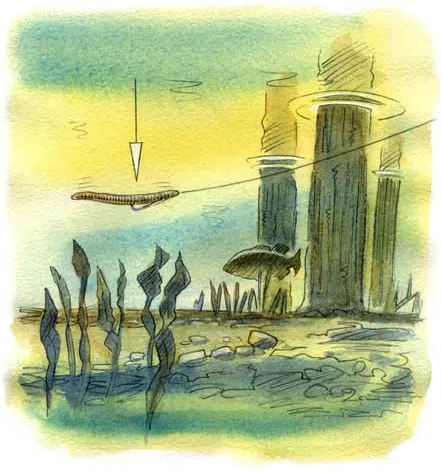
The weightless Texas rig is an all-day tactic that works best in clear to somewhat stained water.
Yamamoto himself rigs a 5-inch Senko Texas-style—as opposed to a wacky rig Senko—with a 3/0 Gamakatsu EWG offset worm hook
. “Weightless is the most effective way,” he says.
After casting the bait to a likely bass lair, let it sink freely on controlled slack line (a tight line will pull the bait ahead unnaturally). When you see the line jump or move, respond with a hard hookset (it helps to have a 6-to 6 1/2-foot medium-action bass fishing rod
and 12-to 15-pound-test fishing line for bass
). If no strike occurs on the initial drop, glide the Senko ahead by raising the rod tip. Then lower the tip to let the bait perform a short swan dive—and don’t be surprised by a savage hit after that little up-down move.
The weightless Texas rig is an all-day tactic that works best in clear to somewhat stained water. It’s not as effective in muddy water.
How to Fish with a Weighted Senko Worm
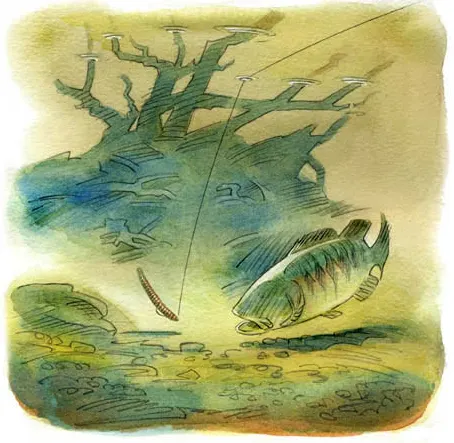
Yamamoto himself says, “bass in deep cover are riled by the Senko’s thick body.”
While working a Senko rigged weightless is almost an instinct for most bass fisherman, even Yamamoto himself liked to add weight to his presentation. Yamamoto matches a Texas-rigged Senko with a 1/4-to 5/8-ounce bullet sinker when he flips and pitches the bait into dense grass, flooded bushes, and other imposing cover. Though the heavier weights eliminate horizontal sink, they get the worm to bass that would never see it otherwise.
“Bass in deep cover are riled by the Senko’s thick body,” Yamamoto says. “When it hits the bottom, I shake it and they grab on.” Pair the right depth with your Senko presentation to fool Spring bass into striking and start out-fishing the other anglers on the water.
How to Fish a Drop-Shot Senko
A 3-or 4-inch Senko-style bait on a drop-shot rig works wonders, especially when you fish it vertically. It’s a great bet for clear water 20 or more feet deep.
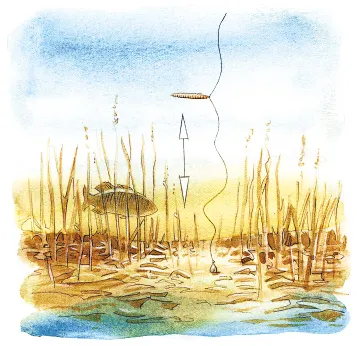
The drop shot senko rig lets the worm flutter naturally, while keeping the bait at the exact desired depth.
With a Palomar knot
, fasten a small drop-shot hook about 3 feet above an egg sinker and run the hook through the nose of the worm. Drop the rig straight down. With the weight resting on the bottom, hold the rod parallel to the water and reel until the line grows taut. Then drop and lift the rod tip without pulling the weight off the bottom. Each drop of the rod puts slack in the line, which lets the Senko seduce bass with a horizontal fall and flutter.
The experts arrived at these four methods through a good deal of experimentation, so there’s no reason not to try other techniques with your Senko and YUM Dinger worms. As long as you can mostly preserve their horizontal swim and body pulse, be as daring as you like.
Wack Rig Senko with Split Shot
Fishing in current? Then this rig wacky rig senko with split shot is for you. Leeches and hellgrammites undulate as they swim, which is why the Wacky Rig works so well in moving water. By adding a light split shot about 12 inches up the line from the bait, it helps the Senko stay barely ticking just over the bottom, and also keeps it in the zone longer in pockets and eddies.
I prefer a 4-inch Slim Senko for this method. This thinner model just has more “finesse appeal,” if you will. The technique kills it wade-able smallmouth rivers, but it’s also awesome for largemouth in the creeks and tributaries of tidal rivers. Sometimes I’ll even paint my split shots so they match the bottom as naturally as possible.
The Heavy Jighead Bomb
Senkos are prized for their slow falling action, but that doesn’t mean they don’t work falling fast or thumping the bottom. Grab a 5/8- or 3/4-oz mushroom jighead (rigged with an exposed hook), and thread on a standard 5-inch Senko. The rig casts a mile and sinks like a stone. In Northern clear-water lakes with expansive flats, this is a great method for targeting smallies, because the rig casts a mile, letting you hit light and dark spots on the bottom from a distance. I’ve also used it on points and humps over deep water for big spotted bass in the South.
This is really the same idea as bombing a big, heavy tube, but in my opinion, the Senko is more streamlined with the weighted head being external (vs internal in a tube), therefore, it sinks more precisely and stands up on the bottom differently, both of which can make it more effective in certain situations. And when the smallies are really biting, you can use up all those not-so-good Senko colors you’ve acquired over the years, because the fish just react and eat it on the fall.
Make Your Wacky-Style Senko Rig More Durable

You can also replace the O ring with a zip tie to create a more durable wacky senko worm presentation.
If you like the O-ring wacky rig senko presentation mentioned above, but still find that bass are ripping it apart too quickly on the strike, then it might be time to upgrade. You can substitute that plastic o-ring for a zip tie, making your Senko rigging practically bomb-proof. A plastic zip tie is also substantially easier to apply around the bait.
Use Colored Zip Ties on Wacky Rig Senko
Simply tighten the zip tie around the worm and hook, then trim. Zip-ties are available in a rainbow of colors. I happened to have a surplus of pink ones, so that’s what I’ve been using. I can’t say that color hurts or helps. Seems to work, anyway.
The whole object, of course, is to keep the hook from tearing up the bait when a fish bites. Not only would you have to then change baits more often, but torn Senkos tend to come loose in the water. In that case, they’re an environmental hazard–sometimes ingested by fish that then can’t digest them.
The hook in the photo, by the way, is a Gamakatsu Finesse Weedless model, that comes with a built-in weedguard that actually works. I have never found a better hook for wacky-rigging.
Wacky Rig Senko Fishing Tips for Spring Largemouth Bass
Now that you know how to rig this favorite soft plastic, how do you work it into your day, and where do you throw it? Spring bass fishing can be exciting with just about any lure, but according to veteran Texas basspro Jay Yelas, you can get the best thrills when you tie on a weightless worm.
“It’s a fun bait to fish, because unlike with a crankbait or a Carolina-rigged lizard, you can actually see the fish swim up and eat it,” Yelas says. “Anybody can fish it, even a rank beginner, and it’ll catch bass in water temperatures ranging from 60 to 75 degrees.”
Yelas fishes his weightless worms on a 6 1/2-foot medium-action spinning outfit with 10-pound-test fluorocarbon line. The combination is perfect for skipping the bait under overhanging cover. He typically opts for a 6- to 8-inch straight-tail worm, which he says exhibits more erratic movements than a ribbon-tail when twitched.
What Color Senko Should I Use?
“Color is a huge part of the equation,” says bass pro Jay Yelas. “I normally use hot colors, like bubblegum, traffic-sign yellow, and white—all of which can provoke awesome reaction strikes. But when bass are especially wary, I’ll switch to natural colors, like watermelon and pumpkin. If you see a bass approach your worm, then turn away, the color is too bright.” Most of the time, Yelas rigs his weightless worms Texas-style. You can also hook them through the nose or sideways through the egg sac so that the head and tail dangle freely (the latter is known as wacky-style). By varying the hook size, you can make the worm sink faster or slower to match the mood and depth of the fish.
Where Do I Cast a Senko to Catch Spring Bass?
No matter how you rig them, these worms are deadly around shallow shoreline cover, such as stumps, laydown trees, and patchy grass. Cast right to the cover, not past it. Casts aimed directly at your target are often rewarded with an immediate strike. If they aren’t, let the worm sink until it’s almost out of sight, then gently twitch your rod tip to make the worm shoot sideways. “Don’t overfish it,” Yelas cautions. “If you don’t get a rise out of a bass after a couple of twitches, reel the worm back in quickly and try another piece of cover.” Often, casting to tight spots in the cover requires a skipping presentation, which Yelas has perfected. (He caught 12 bass to my one on a recent outing when I was using a conventional over-hand delivery.)
“It’s just like skipping a stone across a creek,” he says. “You use a sidearm cast, and you want the worm to smack the water in front of you with enough force that it skitters across the surface. This keeps it low so it’ll scoot under over-hanging tree branches and flooded bushes. Skip it way back in there, where you’d never reach with an overhand cast–that’s where the big boys live.”
How Do I Keep My Worm from Fouling?
Line twist can be a major problem when fishing weightless worms. Yelas minimizes this by filling his reel only two-thirds full, which keeps the fluorocarbon line from popping off the spool in coils. “You also have to rig the worm perfectly straight; otherwise it’ll roll completely over when you twitch it–a major cause of line twist.”
Yelas points out one more important detail: “Worms often develop a problematic bend in the package. To remove it, take several worms out in the morning and lay them straight on your boat’s deck–the sun will heat them up enough to get the kinks out. Then you’ll be ready to catch fish.”

